
Zhong Hua City Gate Castle, it is as high as a 5-storeyed building ,very impressive to the visitors to Nanjing .It is not only the basic barrio of Chinese people’s living space, but also an important way to make country stable .In this sense ,Nanjing city wall built 600 years ago and basically preserved well till today , is world-class human cultural heritage.
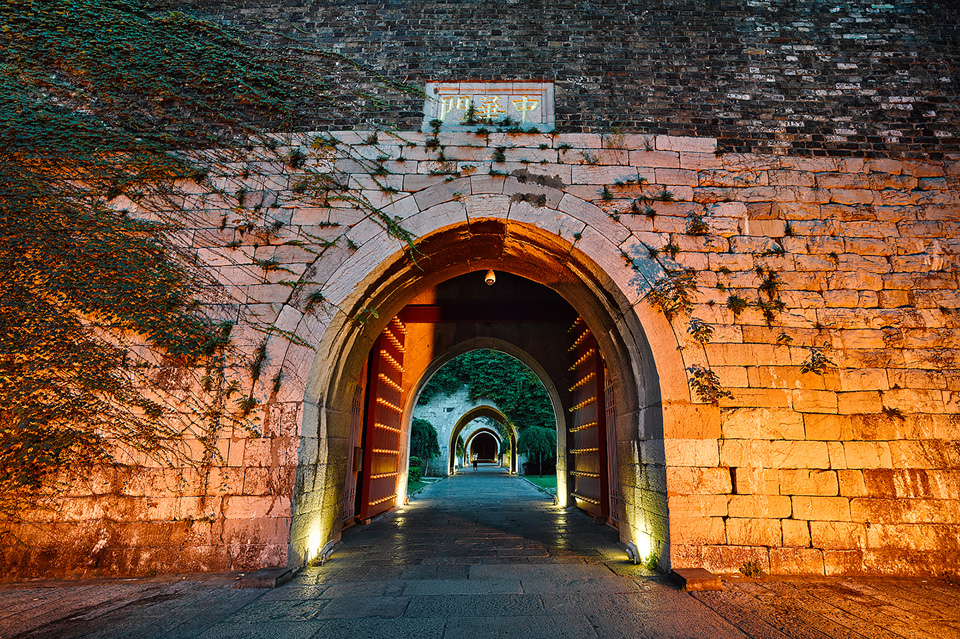
The building of the wall began in 1366, ordered by Zhuyuanzhang ,who adopted the suggestion of “building the high wall “by one of his wise staff(zhu sheng).And the project take totally 20years .And more than 200,000people of 125counties from 5 province in southern China (jiangsu ,anhui,jiangxi,hubei,hunan) were employed on the project.
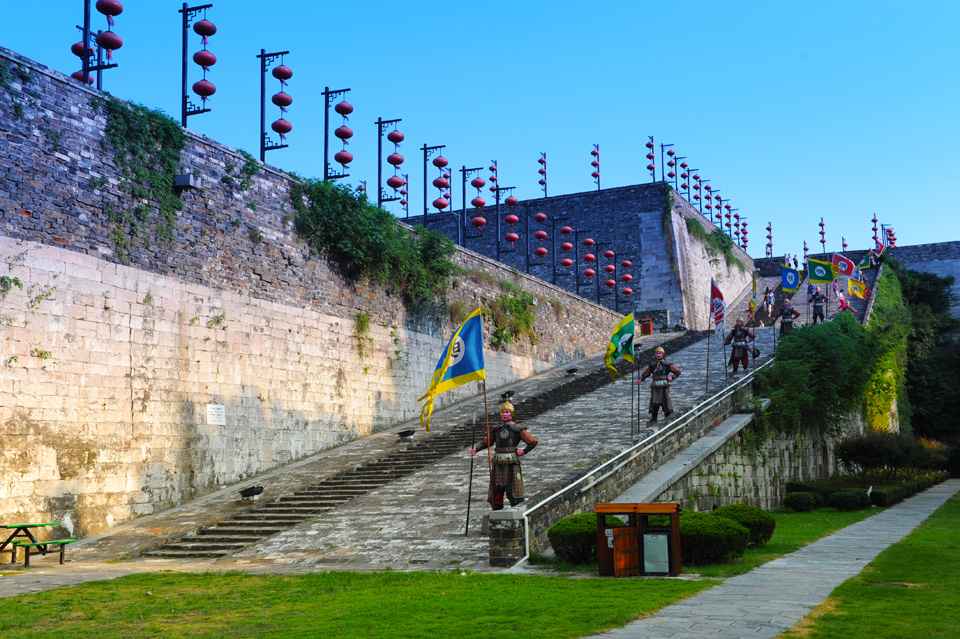
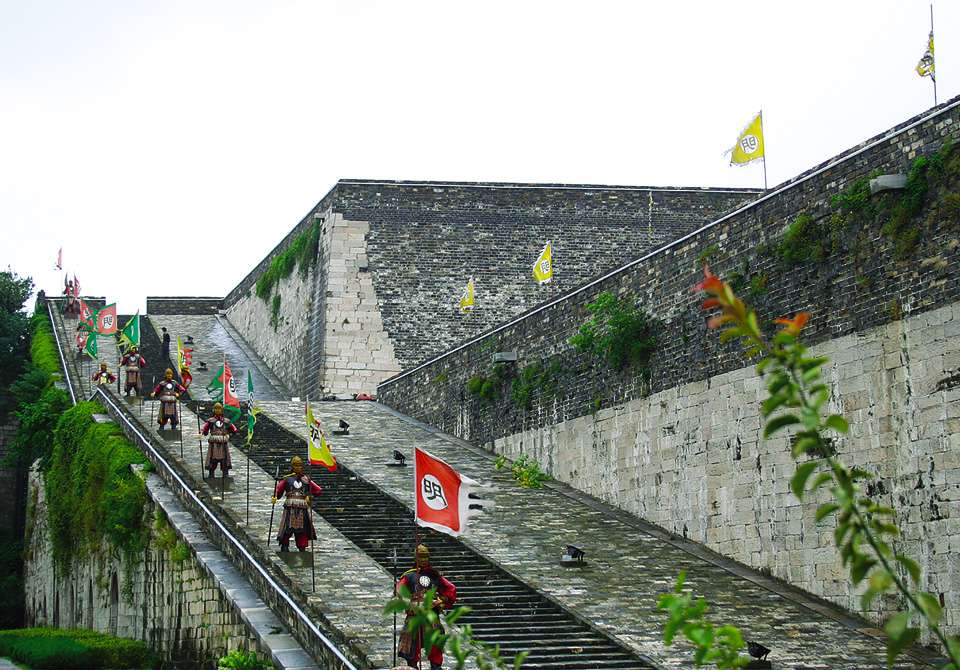
Nanjing City Wall was the longest city wall in the world and the city enclosed by it remained the world’s largest until 17th century .It boasted 33.676km in circumference and the preservation is 23.743km long .The height is from 14-26 meters and the base of the wall is 14 meters wide and the top of the wall is 4-9 meters wide.
Great part of the wall base is made of granite or rectangular slabs of lime-stone ,and both sides of the wall are laid with huge bricks.Each brick is 45cm long, 20cm wide and 10cm thick with a weight of 15kg .The bricks were cemented in with a mortar of lime ,tong oil, glutinous rice gruel .Many parts of the wall are still in good condition ,it is a good demonstration of it’s solidity. All the bricks were made in the 5 provinces I mentioned before .For the quality control ,every brick was engraved with the name , origin of the artisan and supervisor as well as the date of making it .
The city had 13 gates in the Ming Dynasty ,such as Sanshan gate ,jubao gate, tongji gate ,taiping gate and so on. Among all the gates ,Sanshan ,jubao and tongji gates covering 3 weng cheng because of their strategetic importance . And Han zhong gate covering 2 weng cheng, and Hongwu ,Qingliang ,Shengce covering only 1 weng cheng .Among them ,Jubao gate is the largest and most special one ,which changed its name into present Zhong hua gate in 1931,when Zhonghua Road was constructed .
The gate was formerly called the Treasure Bowl Gate ,which is connected with an interesting story popular among the local people.In the early Ming Dynasty ,when Emperor Zhu yuanzhang started to build a city wall around Nanjing ,everything was done.But this gate was failed to be built after many attempts .From his prime minister ,the emperor heard of a poor fisherman named shen wanshan , who got a treasure bowl and became very rich. The court dispacted people to cheat him out of the treasure bowl and buried it into the ground as foundation of the gate.The gate was finally built up. From the time ,the gate was given the name jubao in Chinese which means treasure bowl. In fact , in the real history ,Shen wanshan was the richest one in the southern China in the late Yuan Dynasty , he donated 1/3 of the whole expenses to build the city wall. But his wealthy made Zhuyuanzhang angry ,and be driven to a distant and poor place by the cruel emperor.
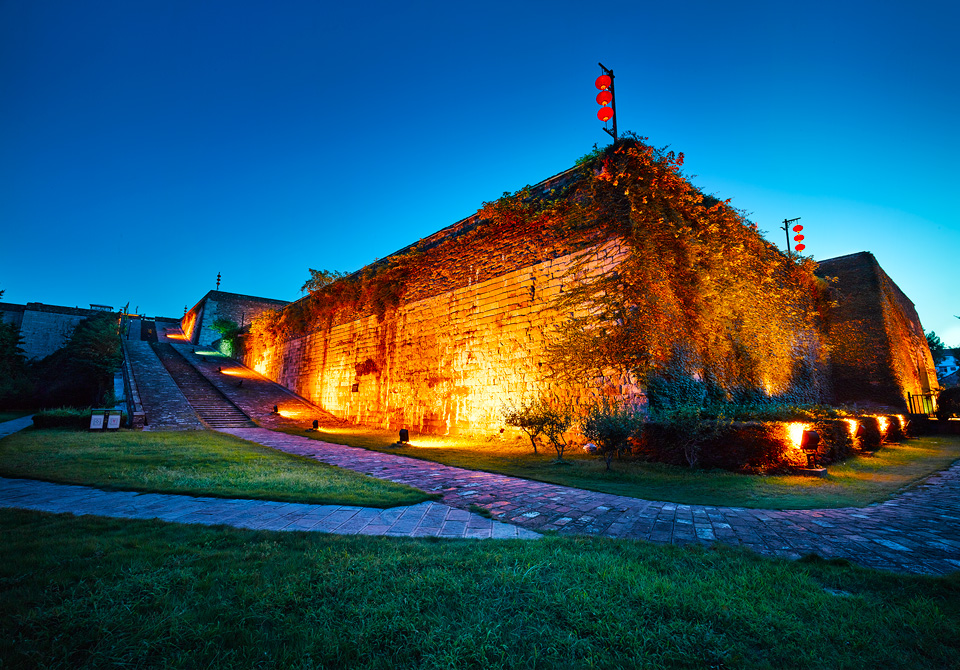
Covering an area of 15,168 square meters ,20 meters high, the gate has 4 entrances with 4 doors ,the open space between them was called “weng cheng “.Weng is a jar like trapping structure in ancient times .The gate complex was used as the defense works of the city ,covering 3 weng cheng .Behind the first conventional double panel wooden door , there are 3 other 23 ---thick vertically sliding stone doors .the heavy stone door are lifted and dropped with the help of a mechanical winch .If enemy troops broke through the first wooden door , they could be separated and trapped inside by the dropping of the other 3 stone doors. This strategy is known in China as “beating dogs behind a bolted door” .And we can also find the rational and exquisite design drainage system here.
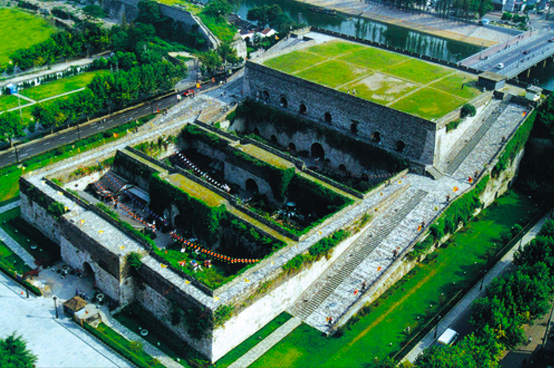
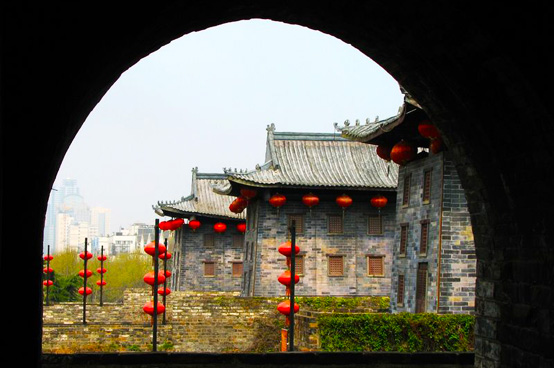
Different from the square-shaped city walls of most ancient Chinese cities ,the wall of Nanjing followed the natural topography and formed an irregular shape . By this construction ,natural barriers ,such as mountains ,rivers ,and lakes were all employed to strength the fortification of the city .The city wall has 24 gates , among which only 13 gates were the original ones from Ming time and the rest were built or added for traffic purpose later on.